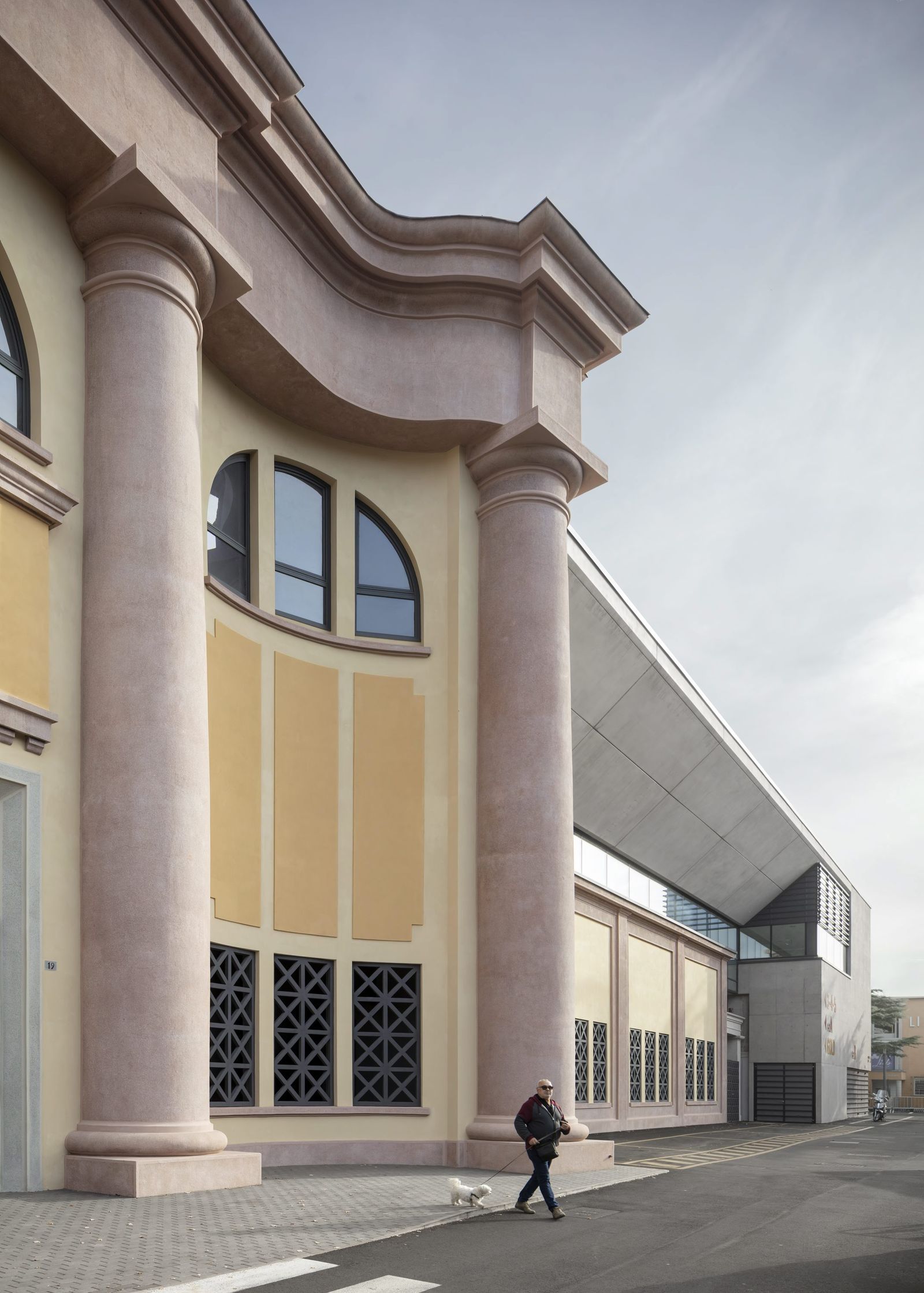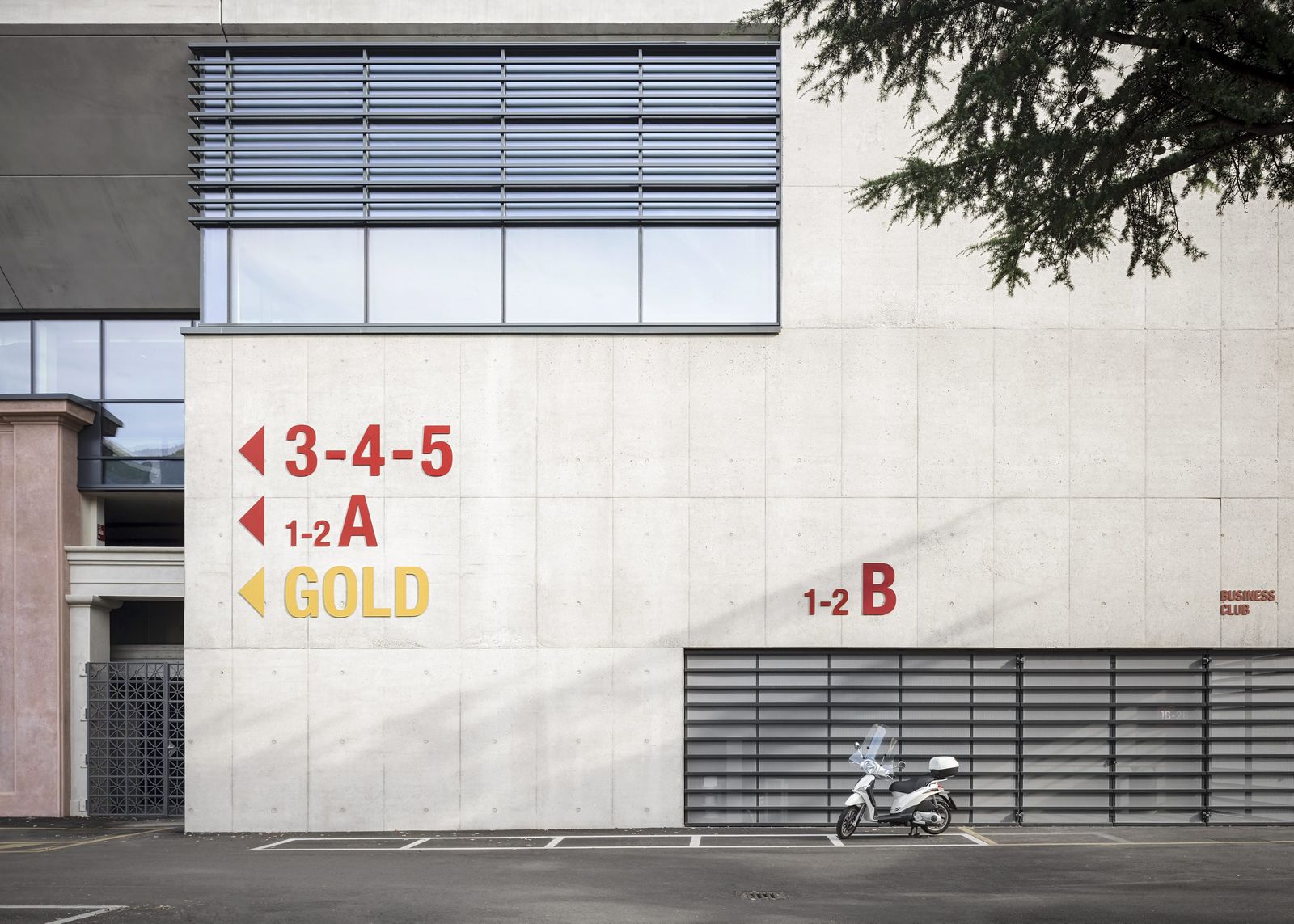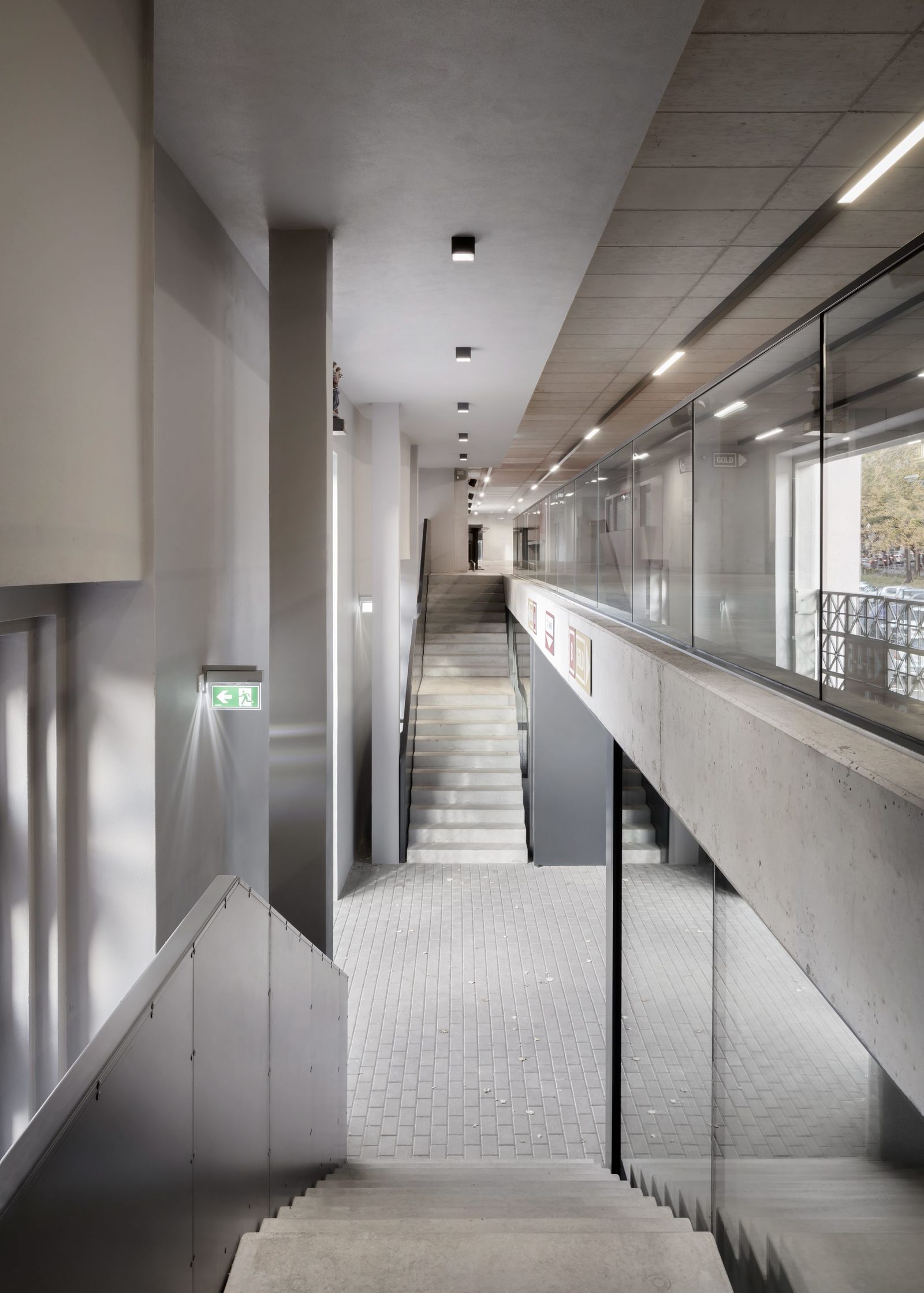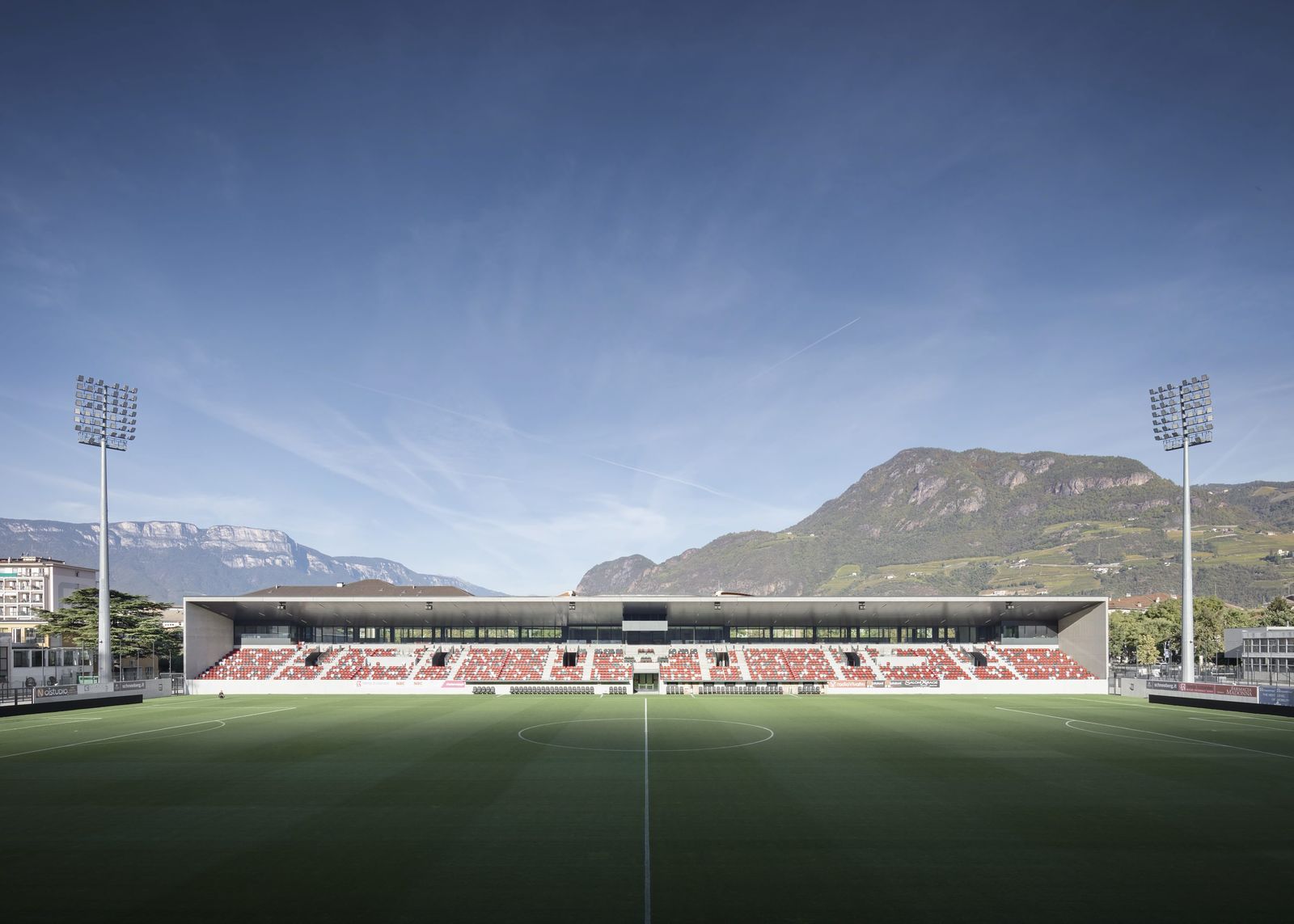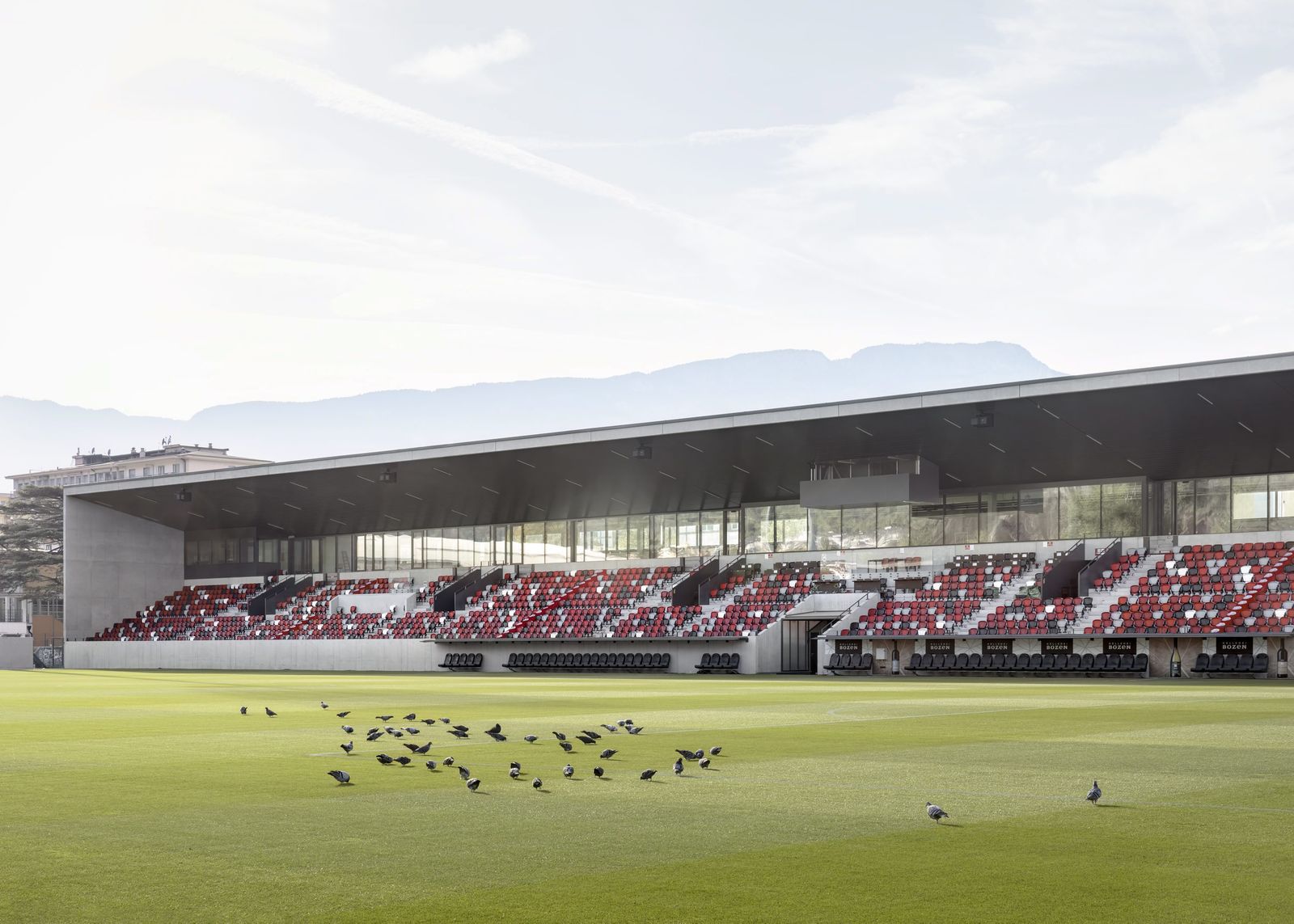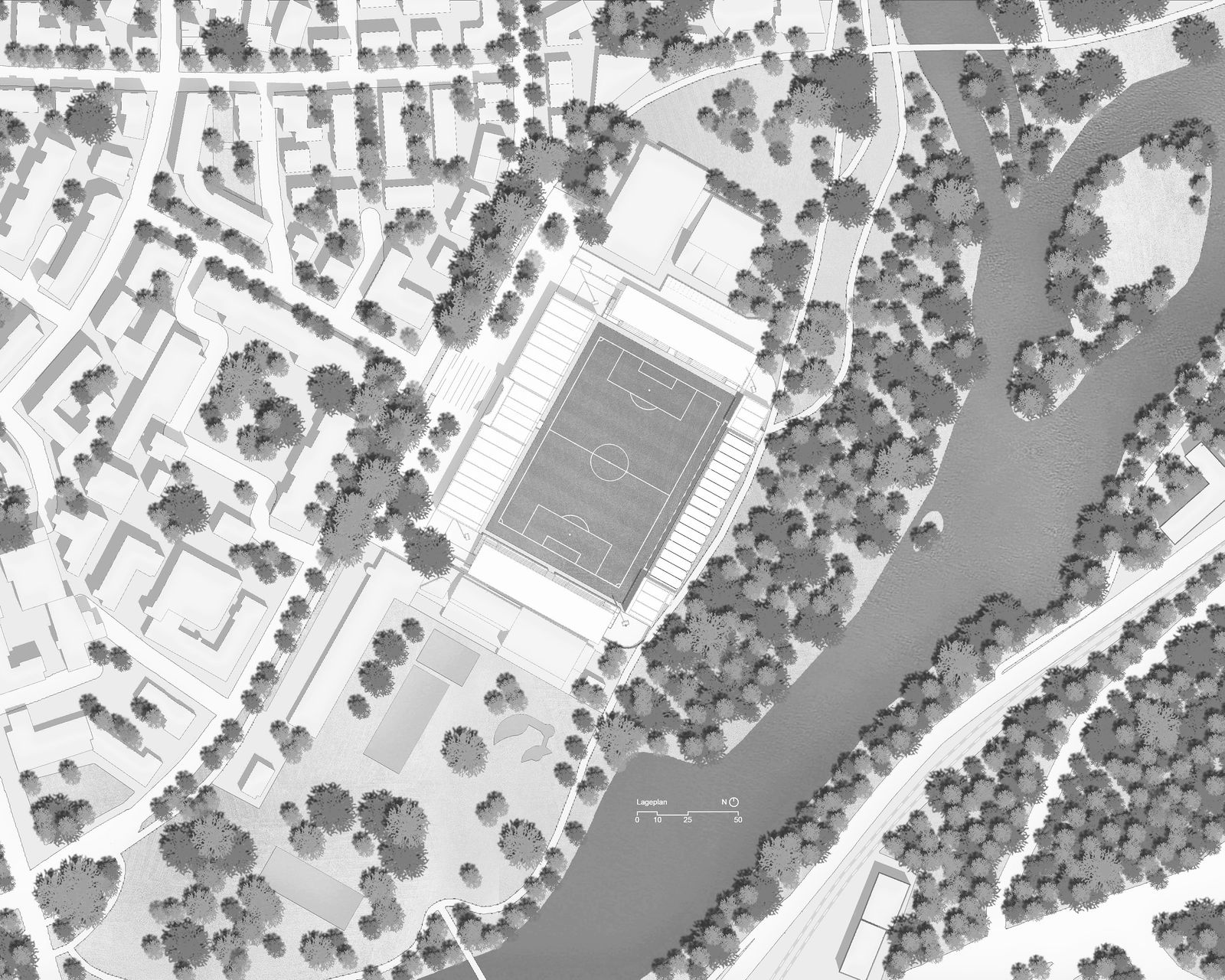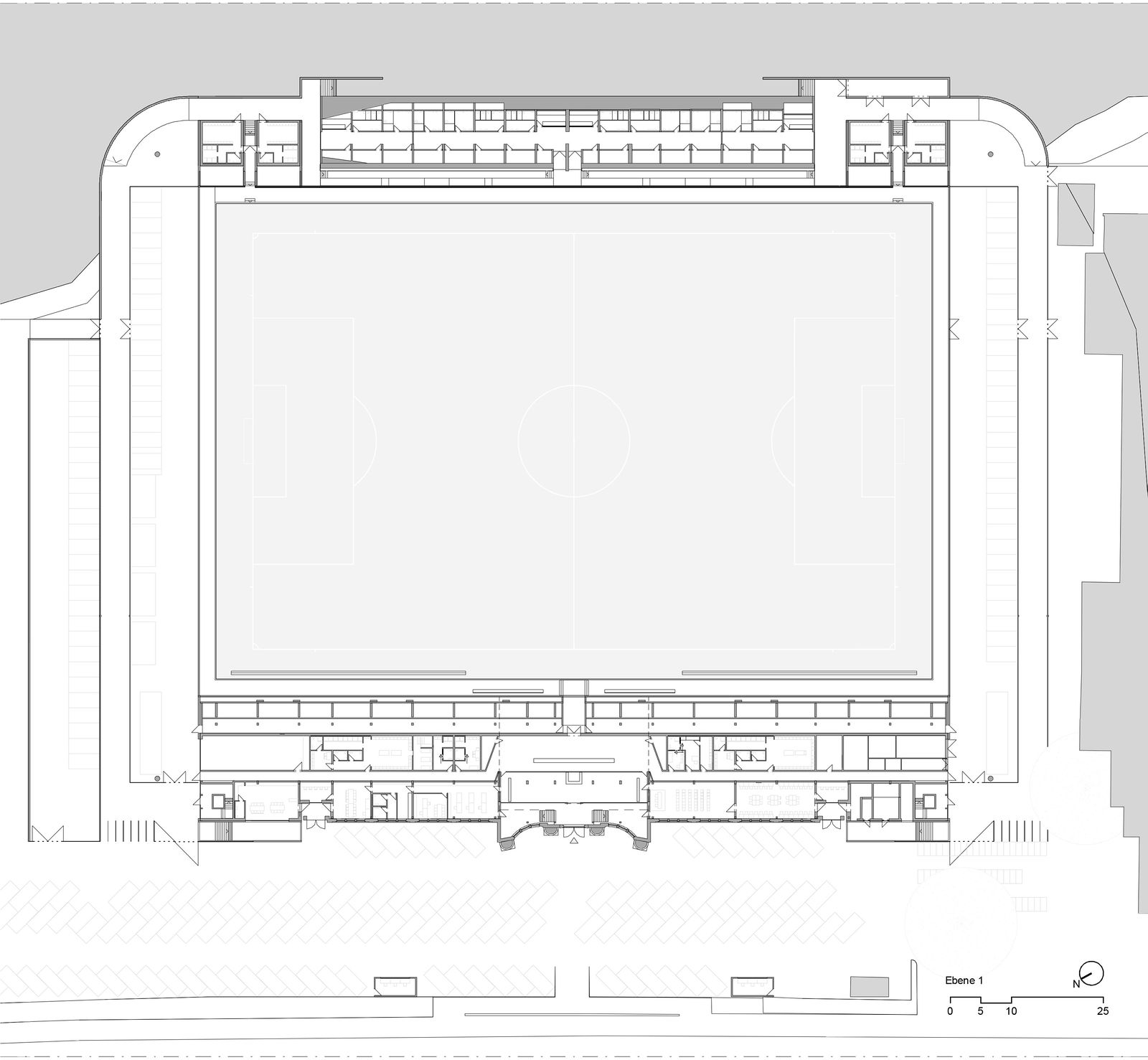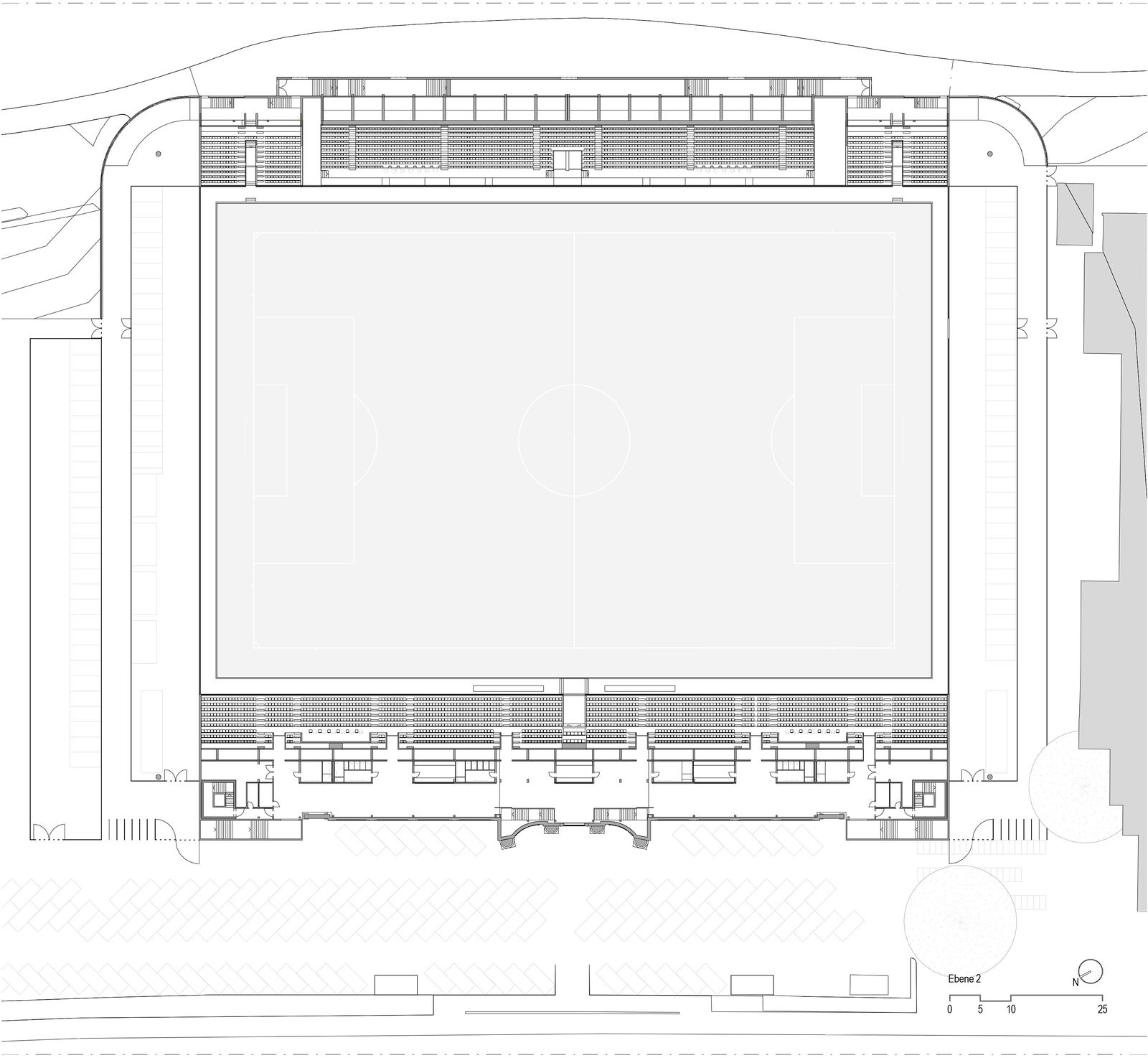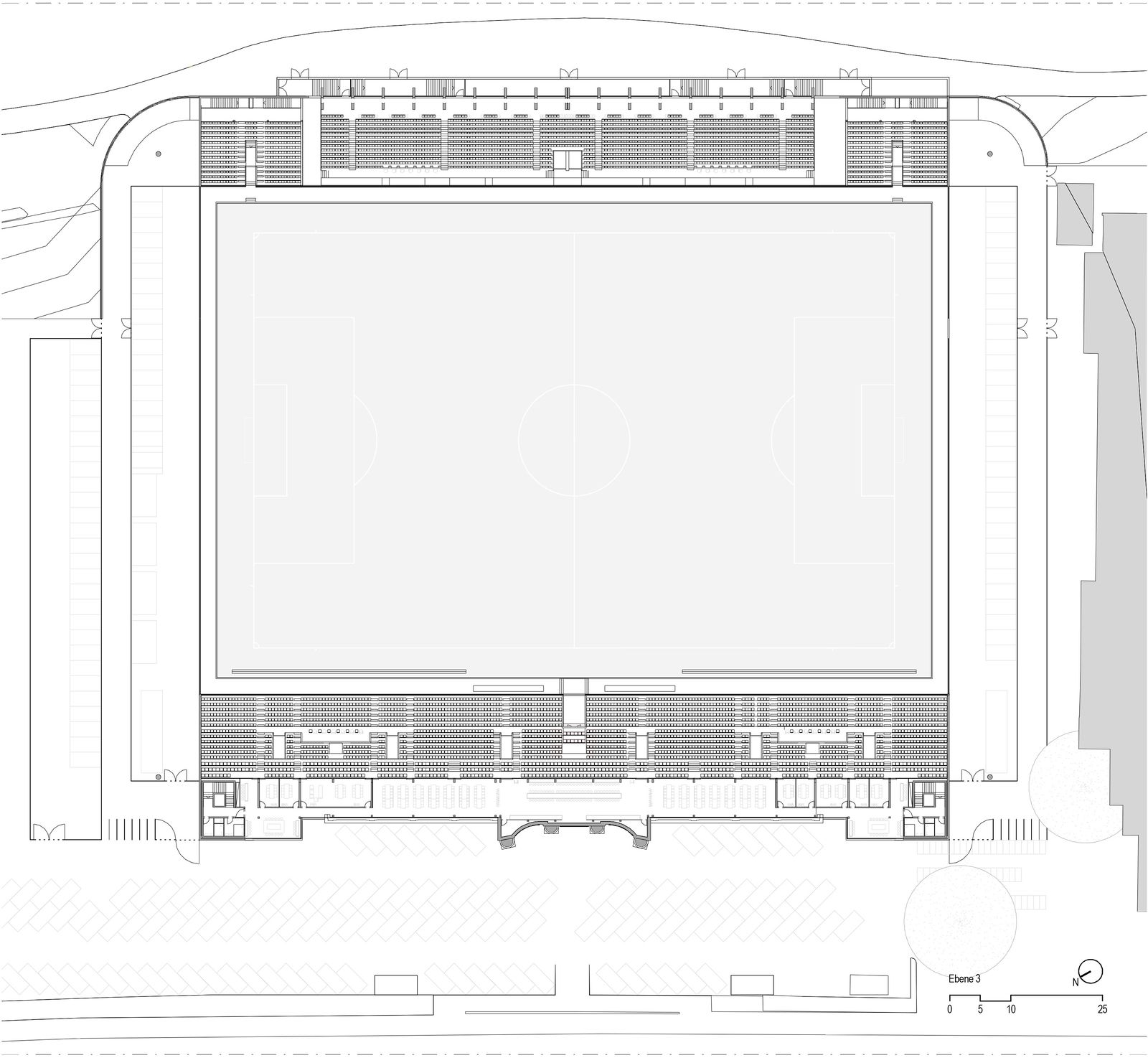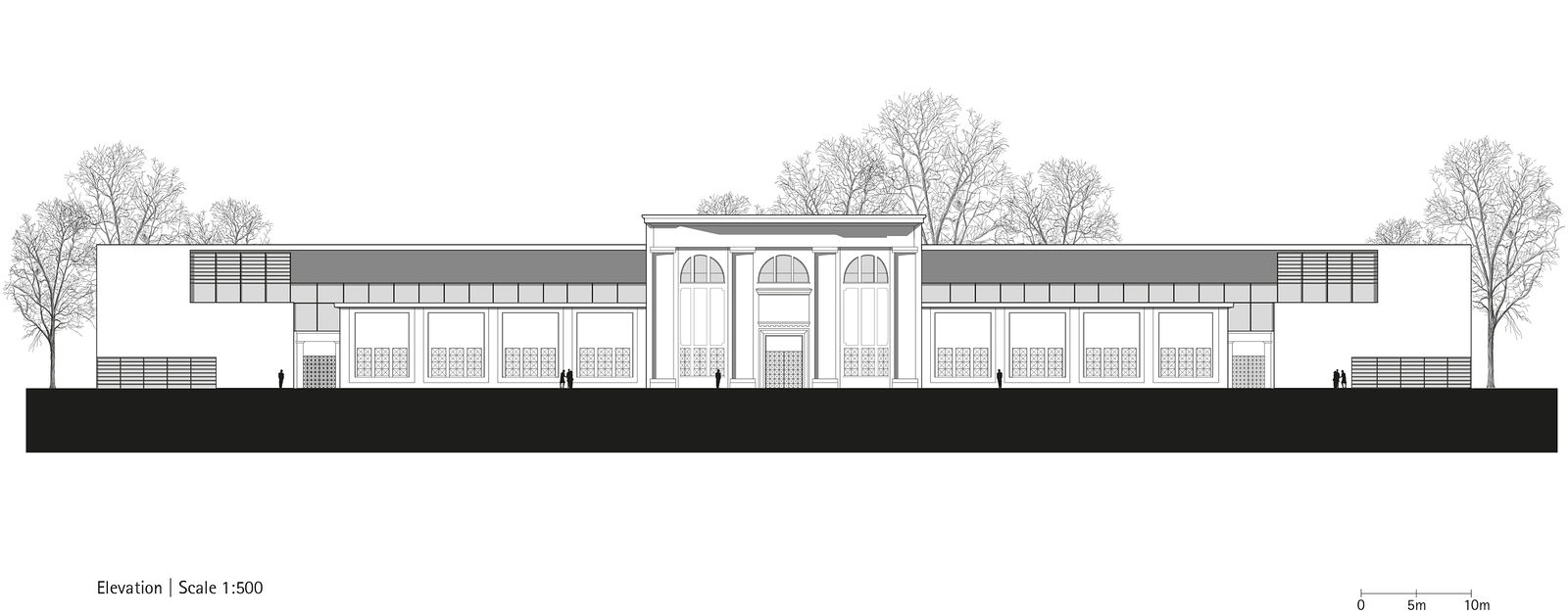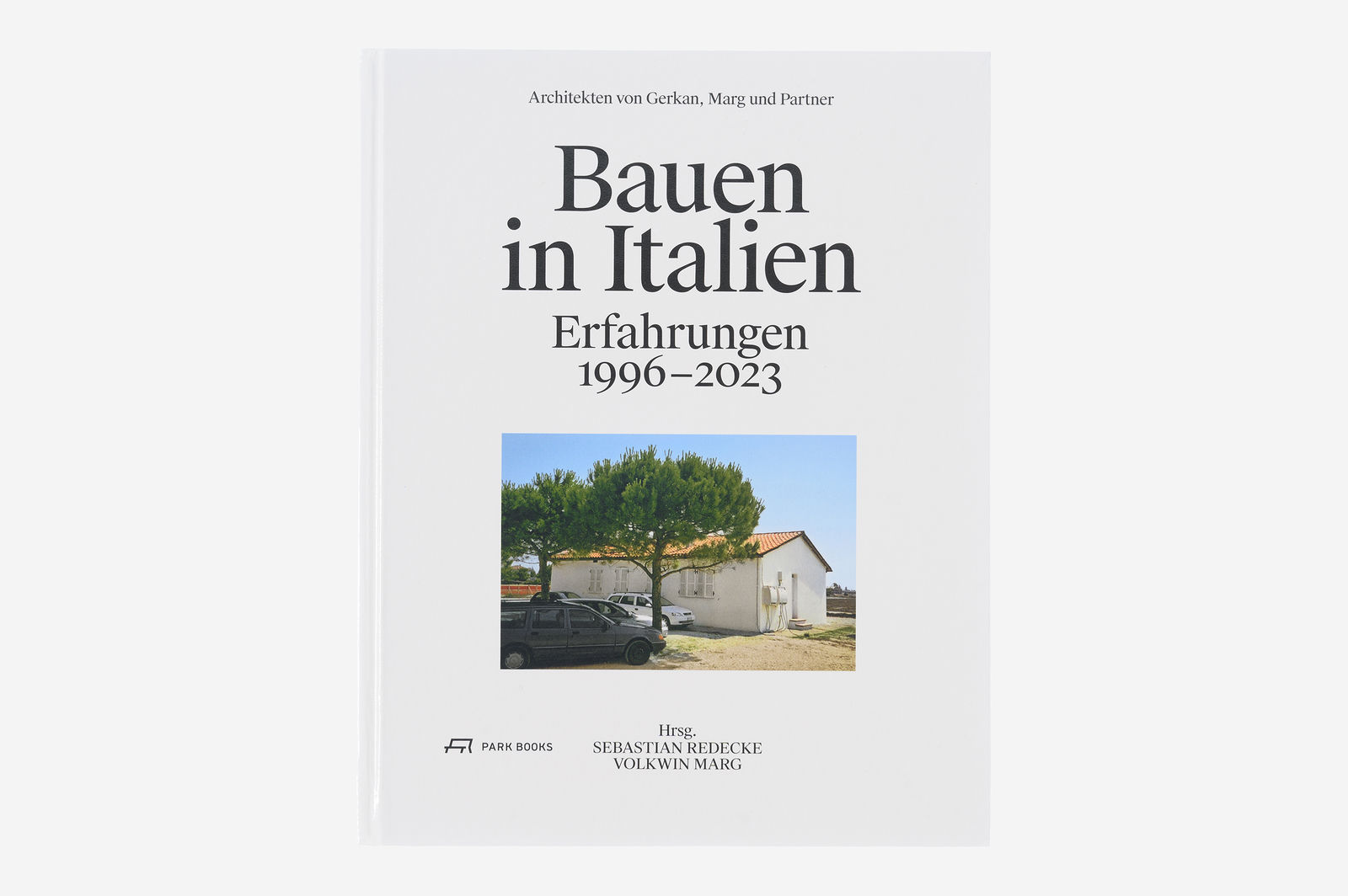Exhibition UMBAU. Nonstop Transformation // Nov 13 - Dec 6, 2025 - Architekturgalerie München // Opening - Nov 13, 2025, 7:00 pm
Drusus Stadium in Bolzano
A new stadium for professional football in South Tyrol
After three years of construction, the refurbishment, conversion, and upgrade of the Drusus Stadium in the center of the city of Bolzano has been completed. Following a qualification competition, the project was awarded to architects Dejaco + Partner from Brixen in close cooperation and in partnership with gmp and Bergmeister Consulting Engineers from Vahrn. The design was jointly produced by Meinhard von Gerkan and Stephan Schütz with Ralf Dejaco.
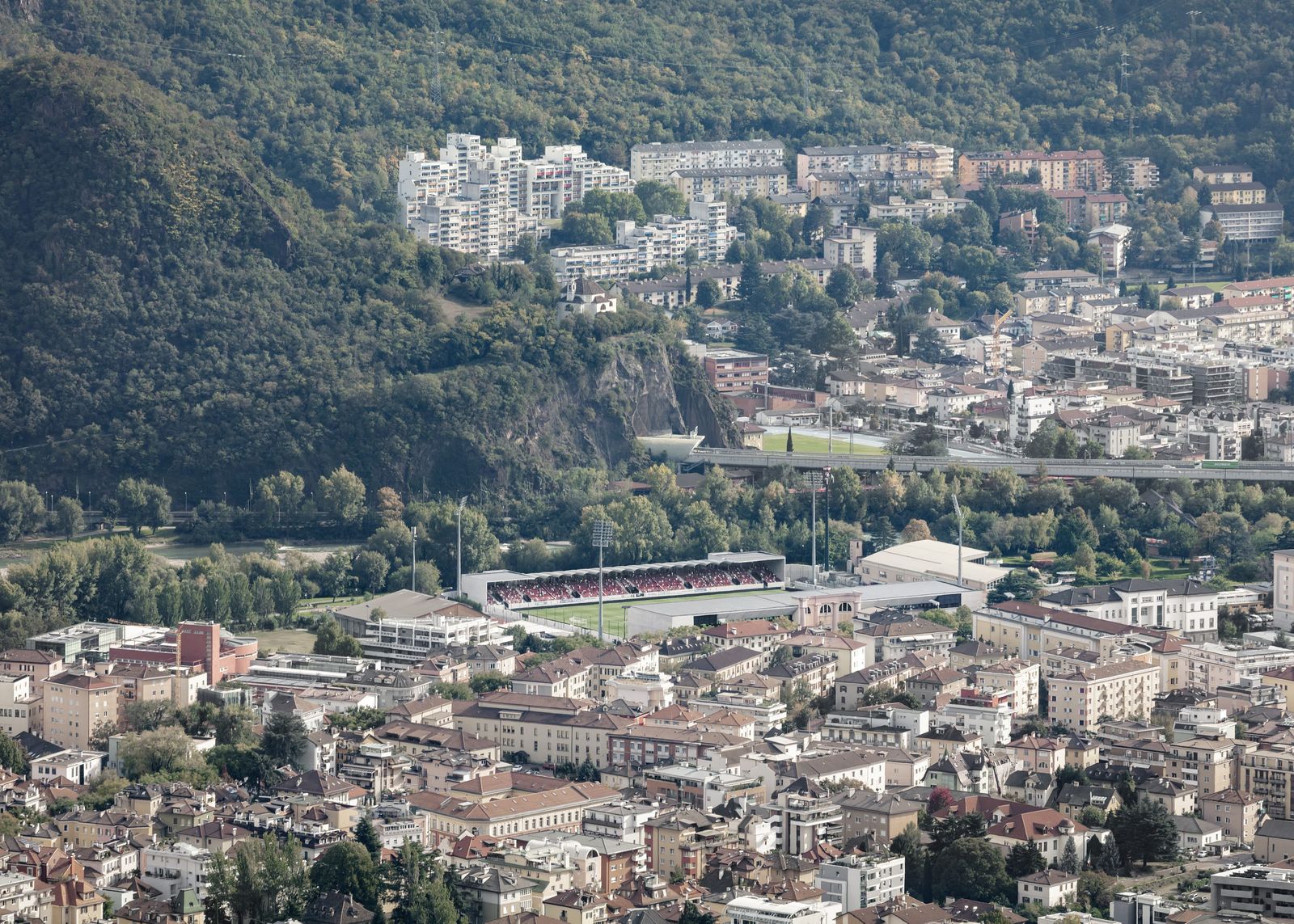
The province of South Tyrol and the City of Bolzano have invested about 15 million euros in the project to adapt the stadium dating from 1936 to the requirements of today’s professional football. It is used for the home games of FC Südtirol. Even though the club’s base is in Bolzano, it is considered to represent all of South Tyrol and, a year ago, managed to achieve promotion to the second Italian league. In order to fulfill the criteria of Serie B, the stadium had to be thoroughly overhauled. During the initial construction phase, the first step was to refurbish the stadium and increase the number of seats from 3,100 to 5,500. To achieve this, both grandstands were made longer and were extended down to the field. The historic parts of the Drusus Stadium were retained as much as possible. Completely new, however, is the field with heated natural turf, a requirement of the Lega Calcio, which makes it possible to use the field also in winter.
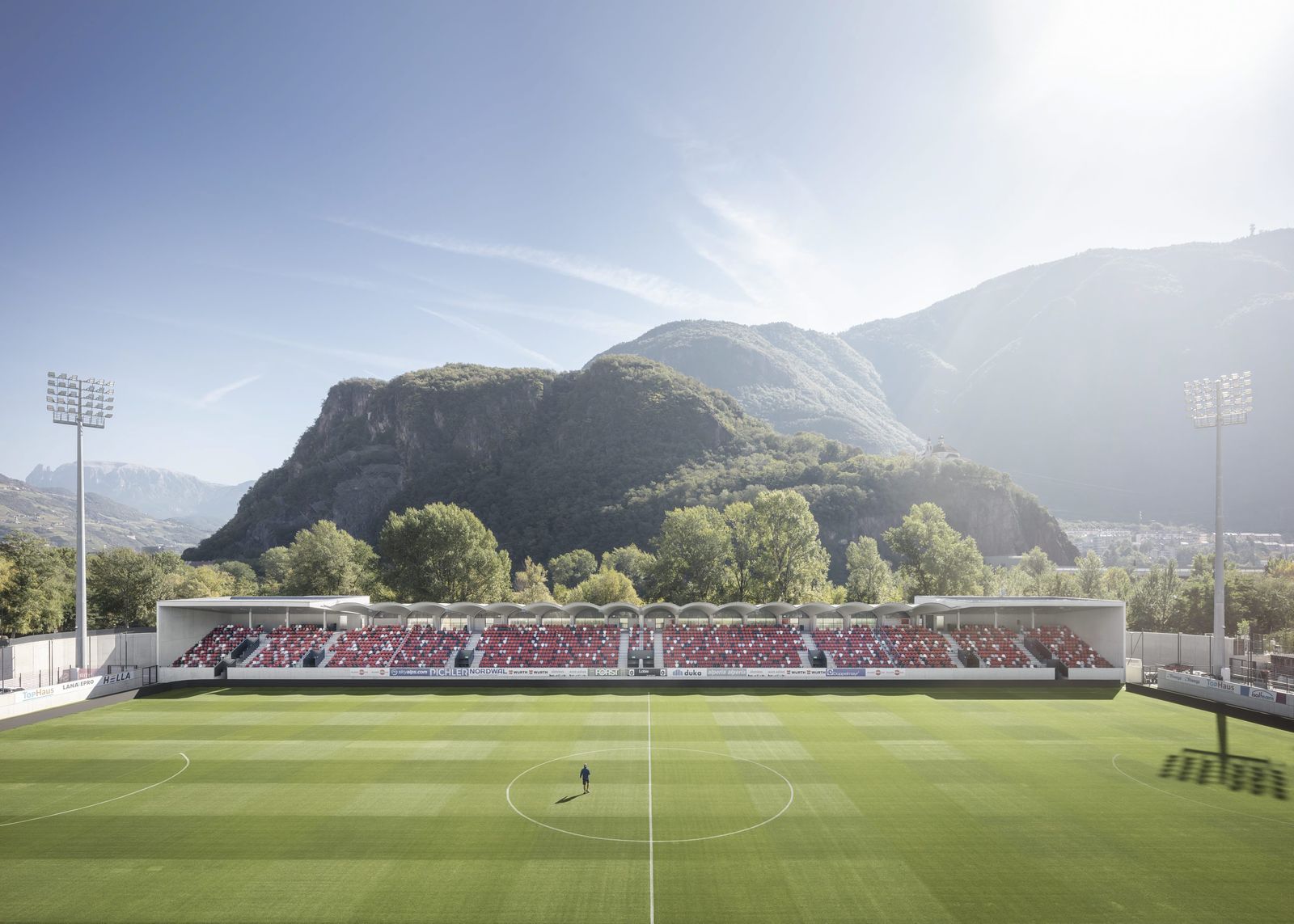
The “Zanvettor” grandstand – a new construction in the purist style – was built behind the stadium portal, which is protected as a historic structure. The monumental portal was carefully integrated in a fair-faced concrete base and was roofed over using steel lattice girders. The space below the grandstand is used for all the facilities needed in connection with Serie B matches. These include better equipped dressing rooms for the teams, the press room, and a press work room that faces the field. The historic portal provides access to the fan shop and eateries, which can also be used when no matches are taking place. The administrative premises required for efficient management of the stadium are located on the upper floor.
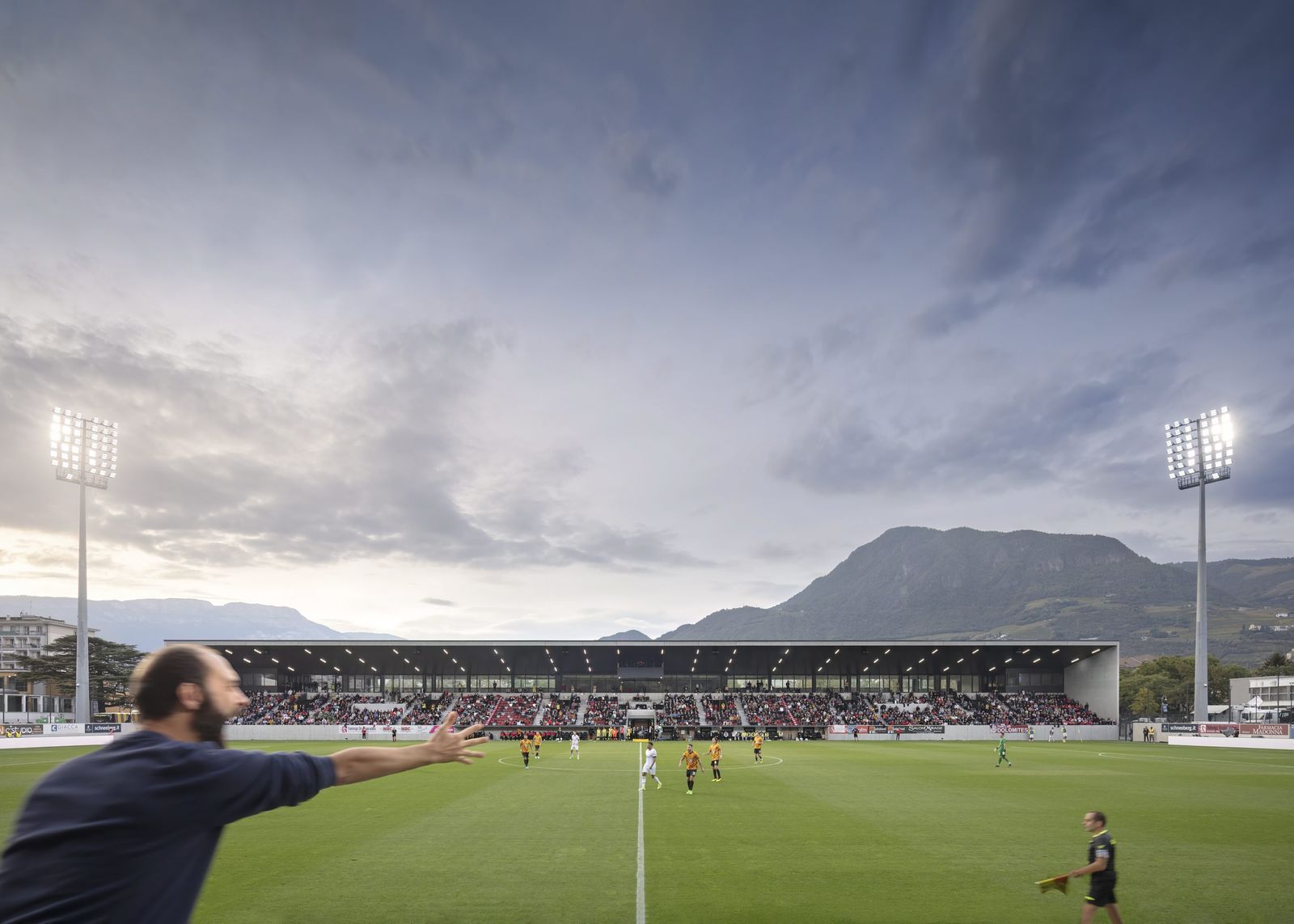
The narrower and lower “Canazza” grandstand opposite the Zanvettor, with its characteristic vaulted concrete shell roof, was retained, overhauled, and extended to the left and right with a simpler roof construction that matches the design of the Zanvettor grandstand. Plans for the future addition of grandstands to the north and south for up to 10,000 spectators are already in place. Matching the Zanvettor and Canazza grandstands, a modular construction system was developed that facilitates an uncomplicated second construction phase.
